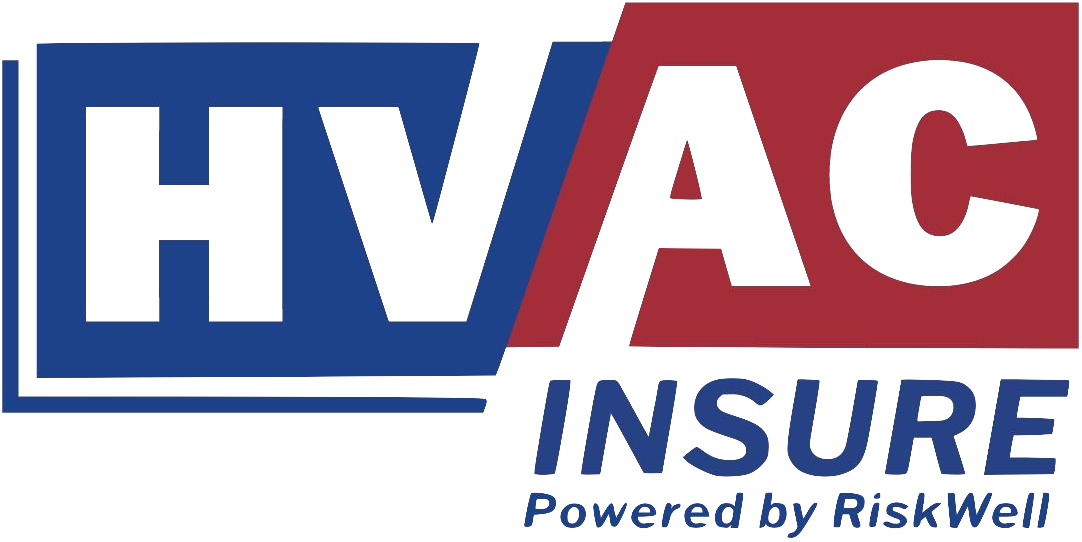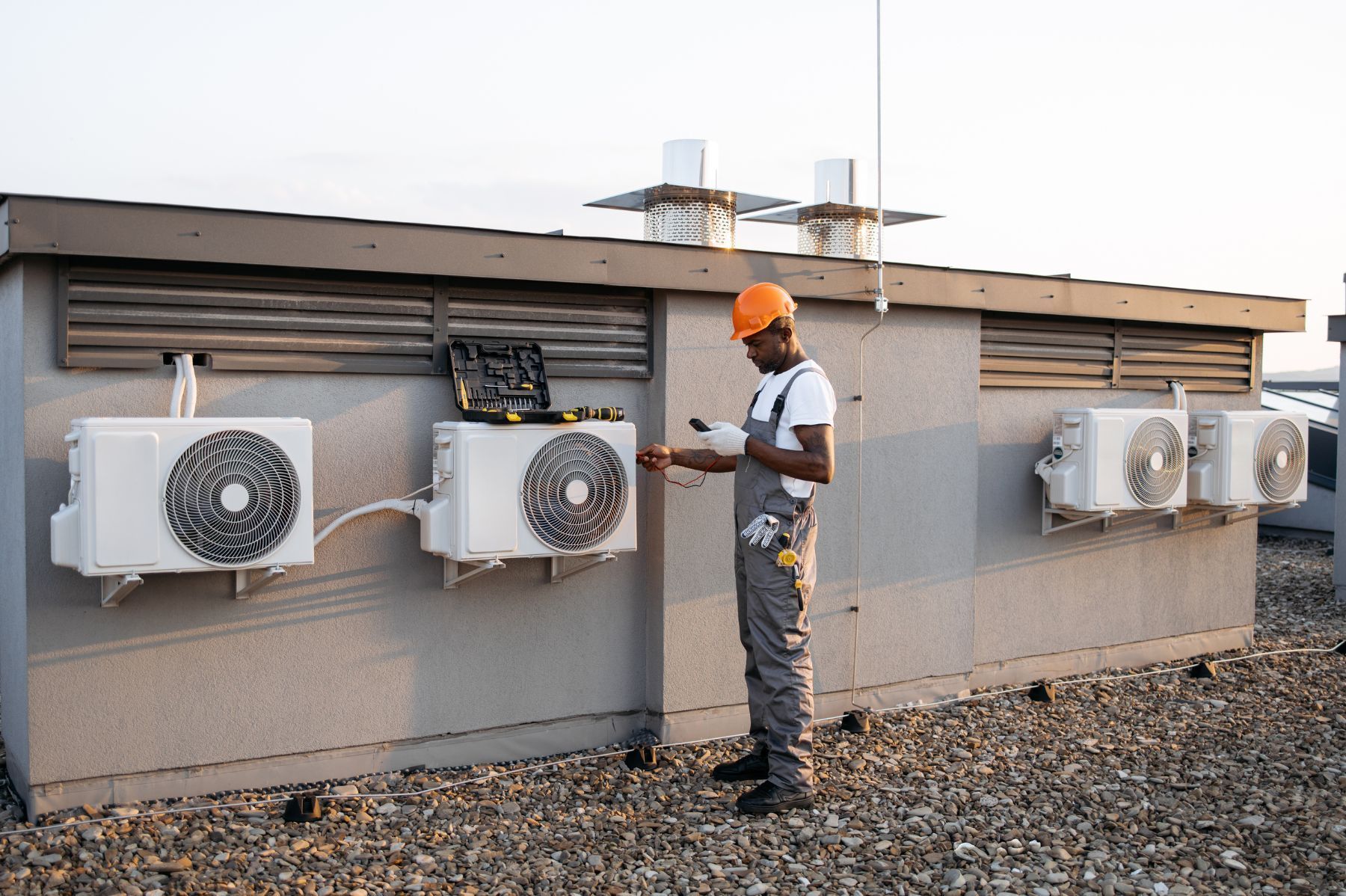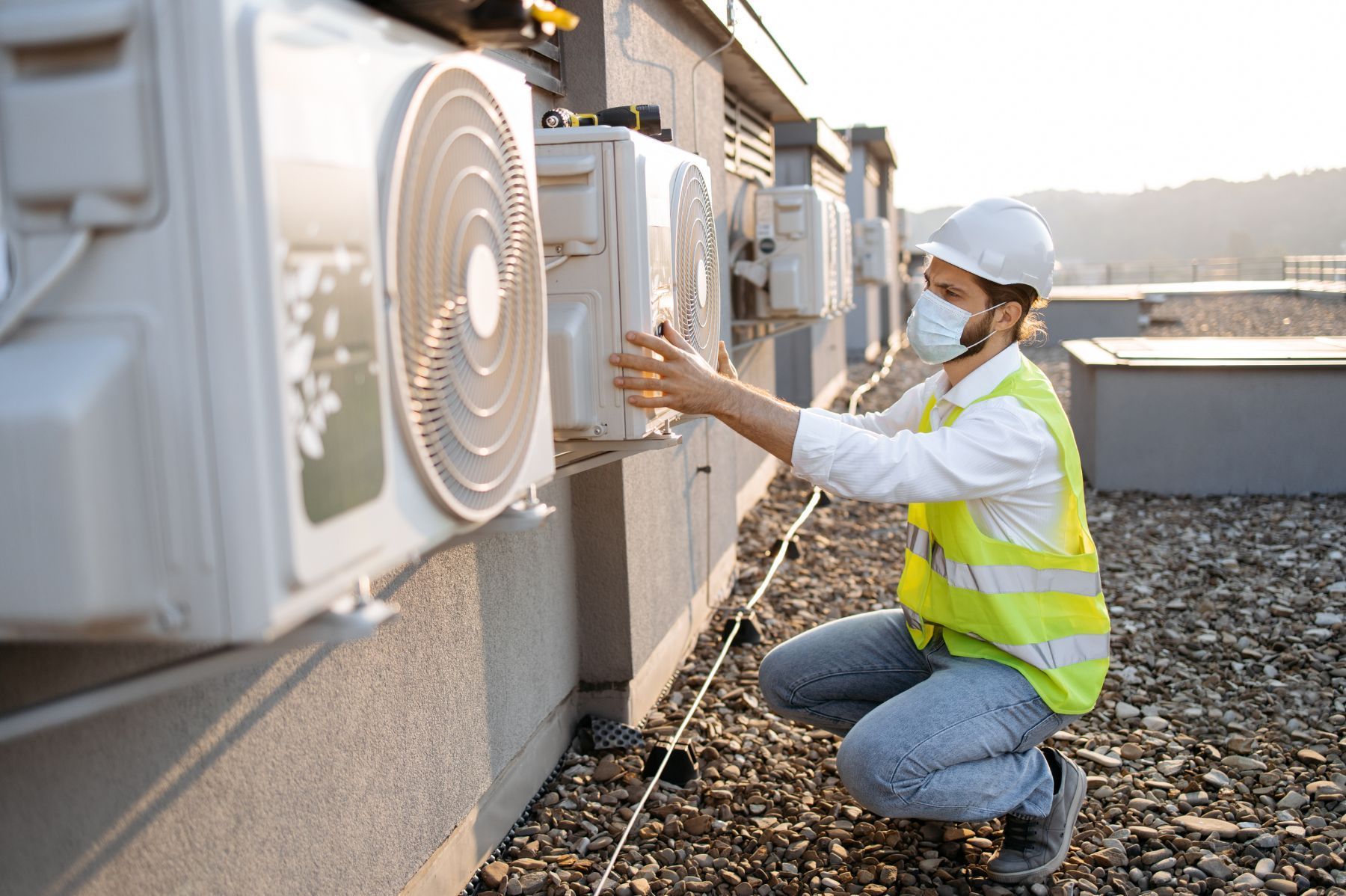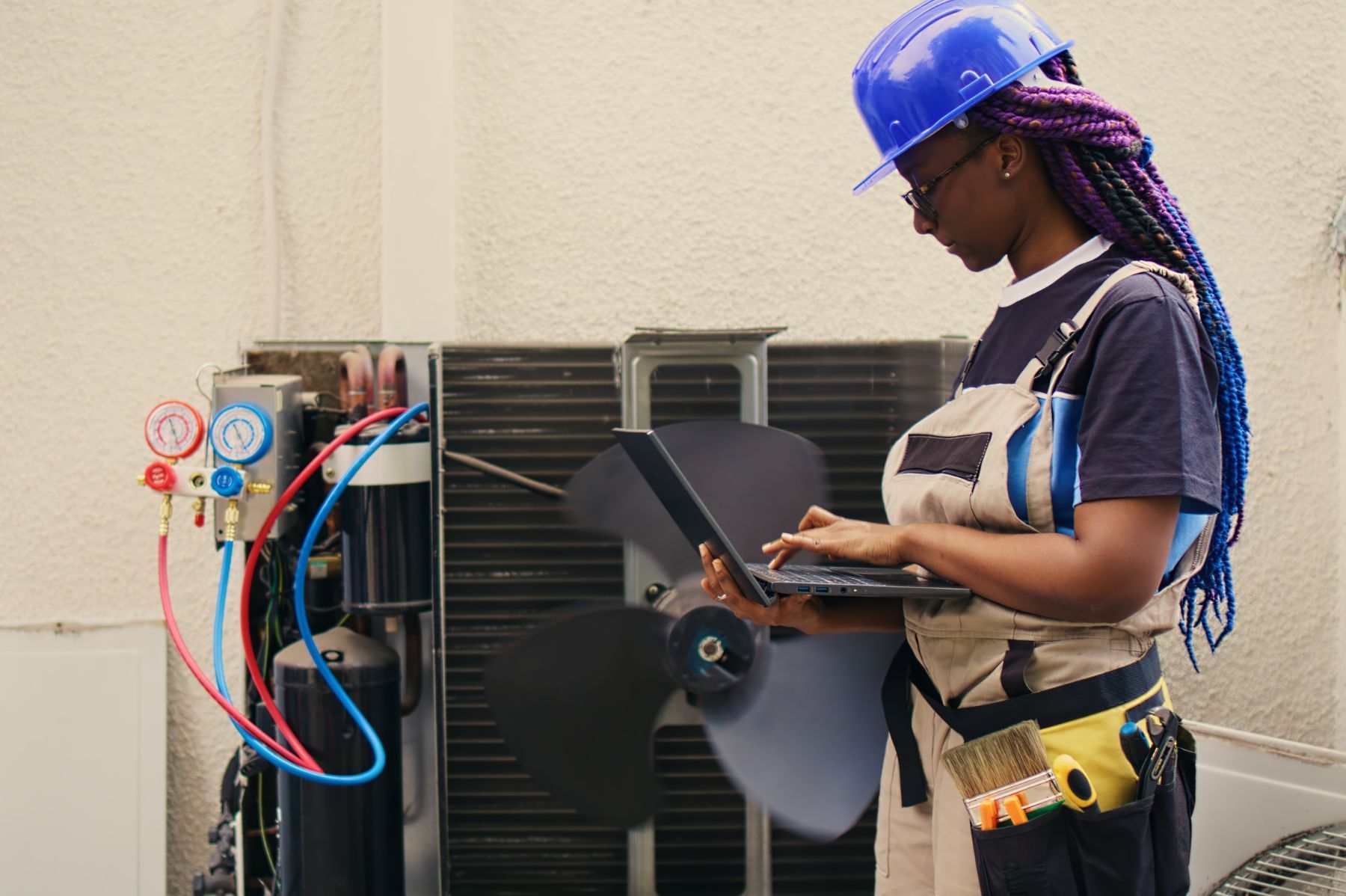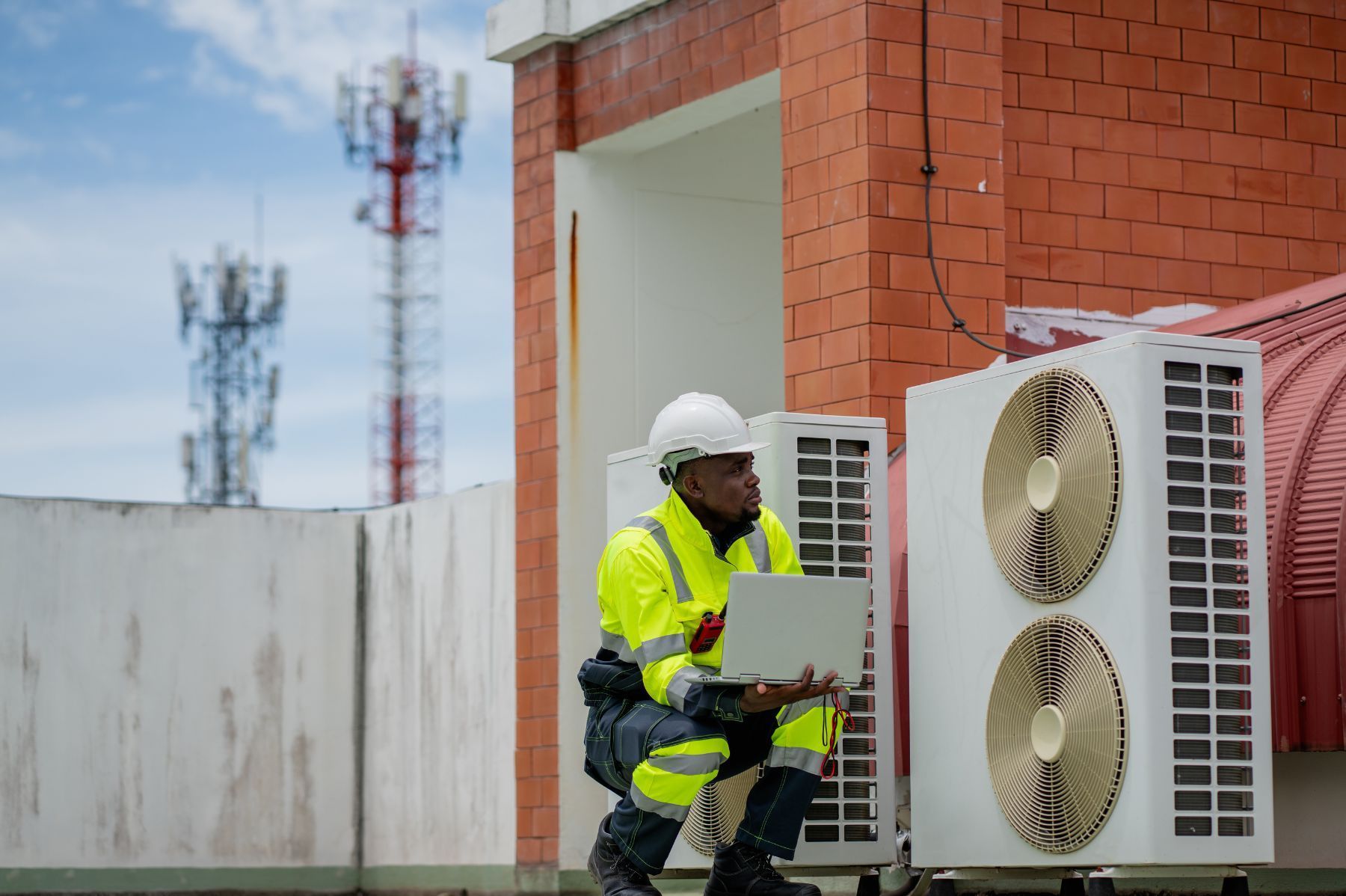Insurance Requirements You Need Before Bidding on HVAC Projects
See How We're Different
or call us: (469) 678-8001

HVAC projects come with a unique set of risks that can quickly turn a profitable job into a costly headache. From equipment failures to worker injuries, the stakes are high. Knowing the insurance requirements before you place your bid is not just smart-it’s essential for protecting your business and staying competitive. With over 25,000 HVAC claims annually costing the industry more than a billion dollars, understanding the right coverage can make all the difference in your bottom line and reputation. FieldFactor’s insights shed light on why these risks are so prevalent and how insurance plays a critical role.
Why Insurance Matters for HVAC Contractors
HVAC work is inherently hazardous. Technicians face risks like electrical shocks, refrigerant leaks, and heavy lifting daily. These dangers lead to more than 25,000 claims every year, with nearly 40% tied to equipment failures such as improper refrigerant handling. When accidents happen, the costs can be staggering—claims often range from $25,000 to $50,000 each. These figures highlight why insurance is not just a formality but a necessity for anyone bidding on HVAC projects.
Beyond the direct costs, insurance helps protect your business from lawsuits and property damage claims. For example, a leaking air conditioner could damage a client’s floors, leading to expensive repairs and potential legal action. Without proper coverage, these incidents could wipe out your profits or worse, threaten your business’s survival. As Insureon points out, the risks extend beyond worker injuries to client property damage, making comprehensive insurance coverage a must-have.
Moreover, having the right insurance can enhance your credibility as a contractor. Clients are more likely to trust a business that is fully insured, as it demonstrates a commitment to professionalism and responsibility. This can be particularly important when bidding for larger projects, where clients may require proof of insurance before awarding contracts. Additionally, being insured can open up opportunities for partnerships with other businesses, as many companies prefer to collaborate with contractors who have adequate coverage to mitigate risks associated with joint projects.
Furthermore, insurance can also cover the costs associated with equipment breakdowns and repairs, which are common in the HVAC industry. With the reliance on specialized tools and machinery, any downtime can lead to significant financial losses. By having equipment breakdown insurance, contractors can ensure that they are not left in a lurch when a critical piece of equipment fails. This type of coverage can help maintain operational efficiency and keep projects on schedule, ultimately leading to higher customer satisfaction and repeat business.
Types of Insurance HVAC Contractors Need
Before bidding on any project, it’s crucial to understand the different types of insurance that HVAC contractors typically require. Each type covers specific risks, and together they form a safety net that protects your business from financial ruin.
General Liability Insurance
General liability insurance is the cornerstone of HVAC contractor coverage. It protects against third-party claims for bodily injury, property damage, and personal injury. Most HVAC businesses purchase a $2 million general liability limit, with about 20% opting for higher limits—often $4 million—to cover larger projects or higher-risk jobs. This level of coverage is becoming standard, as noted in the 2023 Construction Benchmark Report. Additionally, it’s important for contractors to regularly review their coverage limits and adjust them as their business grows or as they take on more complex projects. This proactive approach can prevent potential gaps in coverage that might leave the business vulnerable to unforeseen incidents.
Workers’ Compensation Insurance
Given the physical demands and hazards of HVAC work, workers’ compensation insurance is essential. It covers medical expenses and lost wages for employees injured on the job. In Washington alone, the Department of Labor & Industries reported 1,325 lost-time claims from HVAC trades in 2022, with an average direct cost of $41,200 per claim. This illustrates how costly workplace injuries can be without proper coverage. Furthermore, many states require businesses to carry this insurance, making it not just a safety measure but a legal obligation. Implementing safety training programs and regular equipment inspections can also help reduce the likelihood of accidents, thereby lowering insurance premiums over time.
Professional Liability Insurance
Also known as errors and omissions insurance, this coverage protects against claims of negligence or faulty workmanship. HVAC contractors who design systems or provide consulting services should seriously consider this insurance to guard against costly lawsuits stemming from professional mistakes. It’s worth noting that even minor oversights can lead to significant financial repercussions, especially if they result in system failures or safety hazards. By investing in professional liability insurance, contractors can not only protect their financial interests but also enhance their reputation by demonstrating a commitment to quality and accountability in their work.
Commercial Auto Insurance
Many HVAC contractors rely on vehicles to transport equipment and technicians. Commercial auto insurance covers accidents involving company vehicles, protecting your business from liability and repair costs. This type of insurance is particularly important given the nature of the work, which often involves traveling to various job sites. Additionally, contractors should consider including coverage for equipment that may be stored in vehicles, as theft or damage can lead to significant financial losses. Regularly maintaining vehicles and ensuring that drivers are trained can further mitigate risks associated with commercial auto insurance, helping to keep premiums manageable while ensuring the safety of employees on the road.
Types of Insurance HVAC Contractors Need
Before bidding on any project, it’s crucial to understand the different types of insurance that HVAC contractors typically require. Each type covers specific risks, and together they form a safety net that protects your business from financial ruin.
General Liability Insurance
General liability insurance is the cornerstone of HVAC contractor coverage. It protects against third-party claims for bodily injury, property damage, and personal injury. Most HVAC businesses purchase a $2 million general liability limit, with about 20% opting for higher limits—often $4 million—to cover larger projects or higher-risk jobs. This level of coverage is becoming standard, as noted in the 2023 Construction Benchmark Report. Additionally, it’s important for contractors to regularly review their coverage limits and adjust them as their business grows or as they take on more complex projects. This proactive approach can prevent potential gaps in coverage that might leave the business vulnerable to unforeseen incidents.
Workers’ Compensation Insurance
Given the physical demands and hazards of HVAC work, workers’ compensation insurance is essential. It covers medical expenses and lost wages for employees injured on the job. In Washington alone, the Department of Labor & Industries reported 1,325 lost-time claims from HVAC trades in 2022, with an average direct cost of $41,200 per claim. This illustrates how costly workplace injuries can be without proper coverage. Furthermore, many states require businesses to carry this insurance, making it not just a safety measure but a legal obligation. Implementing safety training programs and regular equipment inspections can also help reduce the likelihood of accidents, thereby lowering insurance premiums over time.
Professional Liability Insurance
Also known as errors and omissions insurance, this coverage protects against claims of negligence or faulty workmanship. HVAC contractors who design systems or provide consulting services should seriously consider this insurance to guard against costly lawsuits stemming from professional mistakes. It’s worth noting that even minor oversights can lead to significant financial repercussions, especially if they result in system failures or safety hazards. By investing in professional liability insurance, contractors can not only protect their financial interests but also enhance their reputation by demonstrating a commitment to quality and accountability in their work.
Commercial Auto Insurance
Many HVAC contractors rely on vehicles to transport equipment and technicians. Commercial auto insurance covers accidents involving company vehicles, protecting your business from liability and repair costs. This type of insurance is particularly important given the nature of the work, which often involves traveling to various job sites. Additionally, contractors should consider including coverage for equipment that may be stored in vehicles, as theft or damage can lead to significant financial losses. Regularly maintaining vehicles and ensuring that drivers are trained can further mitigate risks associated with commercial auto insurance, helping to keep premiums manageable while ensuring the safety of employees on the road.
Meeting Client and Project Requirements
Clients and project owners often have specific insurance requirements that contractors must meet before bidding. These requirements vary but usually include minimum coverage limits and proof of insurance. Not meeting these can disqualify your bid outright. In addition to basic coverage, clients may also look for specialized insurance types, such as workers' compensation or professional liability insurance, particularly for projects that involve complex installations or renovations. Understanding the full spectrum of insurance needs can give contractors a significant edge in competitive bidding scenarios.
Many clients now prioritize transparency and reliability when selecting an HVAC contractor. Recent data shows a 44% increase in homeowners choosing contractors based on previous experience, with 73% citing this as a key factor. Having the right insurance coverage not only protects you but also boosts your credibility and trustworthiness in the eyes of potential clients. A well-documented history of successful projects, combined with comprehensive insurance, can set you apart from competitors who may not prioritize these aspects. HVACInsure’s report highlights this growing trend toward insurance as a competitive advantage, emphasizing that clients are increasingly willing to pay a premium for contractors who can demonstrate financial responsibility and risk mitigation.
Certificate of Insurance (COI)
A COI is a document that verifies your insurance coverage and limits. Most project owners require a COI before awarding contracts. It’s important to have this ready and up to date to avoid delays or disqualification. Some clients may also request additional insured status, which extends your insurance coverage to protect the client as well. This not only reassures clients but also fosters a collaborative atmosphere, as they feel more secure knowing they are covered in the event of unforeseen incidents. Maintaining a good relationship with your insurance provider can facilitate quick issuance of COIs, ensuring you are always prepared for upcoming bids.
Higher Coverage Limits for Larger Projects
While $2 million in general liability coverage is common, larger projects or commercial contracts may require higher limits. Being prepared with $4 million or more in coverage can open doors to bigger jobs and demonstrate your commitment to risk management. Additionally, some clients may require proof of specific endorsements or additional coverage types, such as
pollution liability or equipment breakdown insurance, especially for projects involving HVAC systems that handle hazardous materials. Having a comprehensive understanding of these requirements not only enhances your bidding strategy but also positions you as a knowledgeable and reliable contractor in the eyes of potential clients.
Certification and Training: An Insurance Factor
Insurance companies often look favorably on HVAC contractors who require their technicians to obtain industry certifications. A 2019 survey found that 42% of HVAC companies mandate certification, with larger firms more likely to enforce this than smaller ones. Certified technicians tend to follow best practices, reducing the likelihood of accidents and claims.
This focus on certification can lead to lower insurance premiums and better terms. It also aligns with client expectations for professionalism and reliability. Investing in technician training is not just about skill-it’s a strategic move to enhance your insurance profile and win more bids.
Cost Considerations for HVAC Insurance
Insurance costs for HVAC businesses vary widely depending on coverage type, location, and business size. On average, annual premiums range from $652 to $5,064. Factors such as claims history, number of employees, and the nature of projects also influence costs.
Balancing adequate coverage with cost is a challenge. Skimping on insurance to save money can lead to devastating financial consequences. Instead, aim for coverage that matches your risk profile and project demands. Consulting with a knowledgeable insurance agent who understands the HVAC industry can help tailor policies that protect your business without breaking the bank.
Common Risks Driving HVAC Claims
Understanding the most frequent causes of claims can help contractors focus their risk management efforts. Equipment failure tops the list, especially issues related to refrigerant handling. Nearly 39% of HVAC claims are linked to this problem, underscoring the importance of proper training and equipment maintenance.
Other common risks include worker injuries from heavy lifting and electrical shocks. These hazards not only lead to workers’ comp claims but also can result in downtime and lost productivity. Addressing these risks proactively through safety programs and insurance coverage is essential.
Insurance as a Competitive Advantage
In a market where 73% of homeowners now choose HVAC contractors based on previous experience, insurance coverage can be a powerful differentiator. Demonstrating that your business is insured and prepared for risks builds confidence and trust. It signals professionalism and a commitment to quality service.
Moreover, having the right insurance can speed up contract approvals and reduce client concerns about liability. It’s a selling point that goes beyond price, helping you stand out in a crowded field.
Insurance Coverage Comparison for HVAC Contractors
In a market where 73% of homeowners now choose HVAC contractors based on previous experience, insurance coverage can be a powerful differentiator. Demonstrating that your business is insured and prepared for risks builds confidence and trust. It signals professionalism and a commitment to quality service.
Moreover, having the right insurance can speed up contract approvals and reduce client concerns about liability. It’s a selling point that goes beyond price, helping you stand out in a crowded field.
Before You Bid: Key Insurance Checklist
- Verify your general liability limits meet or exceed client requirements.
- Ensure workers’ compensation coverage is active and compliant with state laws.
- Obtain and update your certificate of insurance with additional insured endorsements if needed.
- Confirm your technicians have necessary certifications to reduce risk and improve insurance terms.
- Review your insurance costs and coverage annually to adjust for business growth or changing project scopes.
What to Remember When Choosing Insurance for HVAC Projects
Insurance is more than a box to check before bidding. It’s a strategic tool that protects your business, supports your reputation, and can even help you win more contracts. The right coverage balances risk, cost, and client expectations.
Keep in mind the high cost of claims in the HVAC industry-averaging $25,000 to $50,000 each-and the frequency of incidents. Investing in comprehensive insurance and proper training pays off by minimizing financial exposure and enhancing your professionalism. Staying informed about industry trends and client preferences will keep you ahead of the curve.
For those looking to dive deeper into HVAC insurance and risk management, resources like FieldFactor and HVACInsure offer valuable insights tailored to contractors navigating this complex landscape.
Frequently Asked Questions
Q: What is the minimum general liability insurance limit for HVAC contractors?
A: Most HVAC businesses carry a $2 million general liability limit, but some projects may require higher coverage, often up to $4 million.
Q: Do HVAC technicians need to be certified for insurance purposes?
A: While not always mandatory, certification can lower insurance costs and reduce claims by ensuring technicians follow industry best practices.
Q: Why is workers’ compensation insurance important for HVAC businesses?
A: It covers medical expenses and lost wages if employees are injured on the job, which is common in this physically demanding trade.
Q: Can having insurance help me win more HVAC contracts?
A: Yes. Many clients prefer contractors with verified insurance because it reduces their risk and shows professionalism.
Q: How often should I review my HVAC insurance coverage?
A: Annually or whenever your business grows, takes on larger projects, or changes its operations.
Q: What happens if I bid on a project without proper insurance?
A: You risk disqualification, financial loss from claims, and potential legal trouble.
Q: Is commercial auto insurance necessary for HVAC contractors?
A: If you use vehicles for work, commercial auto insurance protects you from liabilities related to accidents involving those vehicles.
| Coverage Type | What It Covers | Typical Limits | Why It Matters |
|---|---|---|---|
| General Liability | Bodily injury, property damage, personal injury | $2 million standard, up to $4 million+ for large projects | Protects against third-party claims and lawsuits |
| Workers’ Compensation | Medical and wage benefits for injured employees | Varies by state and payroll size | Essential for covering workplace injuries and compliance |
| Professional Liability | Negligence, errors, and omissions in service delivery | Typically $1 million or more | Protects against claims of faulty workmanship |
| Commercial Auto | Accidents involving company vehicles | Varies by vehicle and usage | Protects business assets and covers liability |
